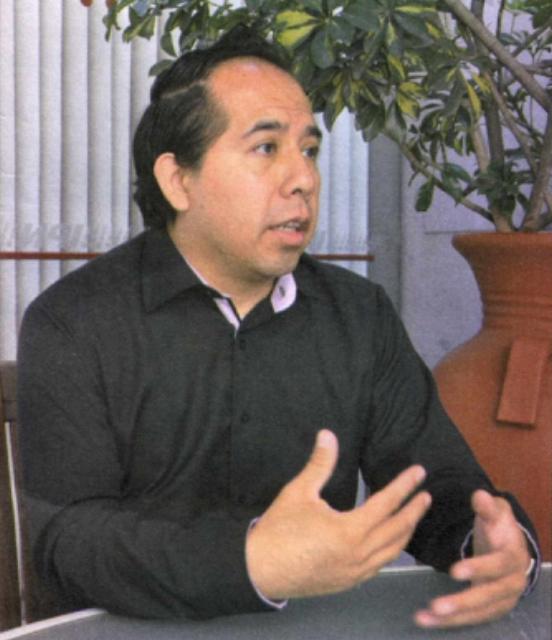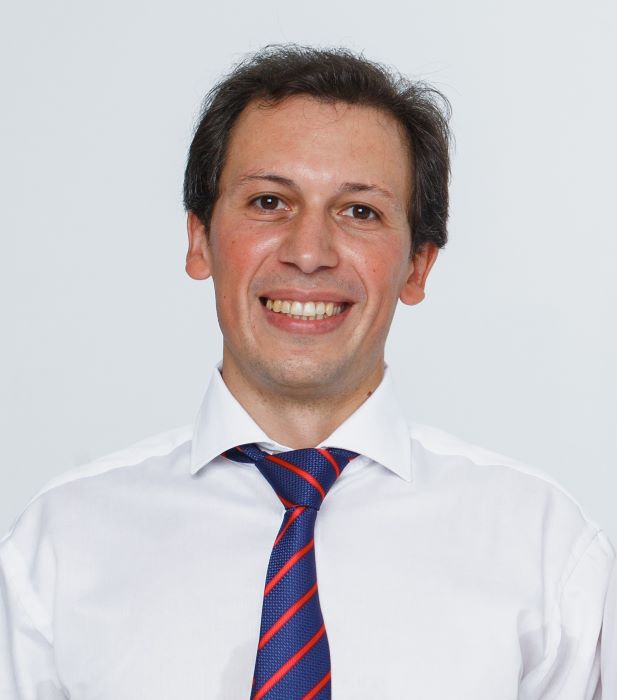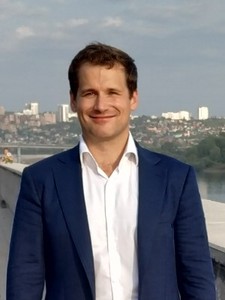
Prof. Genaro J. Martínez
Artificial Life Robotics Laboratory, Escuela Superior de Computación,
Instituto Politécnico Nacional,
México city, México
Unconventional Computing Lab, University of the West of England,
Bristol, United Kingdom
Keynote: Computing and complex dynamics in robots
A recurrent subject in automata theory and computer science is an interesting problem about how machines are able to work, learn, and project complex behavior. In this talk, particularly I shall discuss how some cellular automata rules are able to simulate some computable systems from different interpretations, it is the problem about universality. These systems are able to produce and handle a huge number of information massively. In this context, an original problem conceptualized by John von Neumann from the 40s years is: How primitive and unreliable organisms are able to yield reliable components? How machines could construct machines? In biological terms it refers to the problem of self- reproduction and self-replication. In our laboratories, we implement these problems in physical robots, where some particular designs display computable systems assembled with modular robots and other constructions display collective complex behavior. Modular robots offer the characteristic to assemble and reconfigure every robot. In particular, we shall see in this talk a number of robots constructed by Cubelets to simulate Turing machines, Post machines, circuits, and non-trivial collective behavior. We shall discuss if these machines learn and develop knowledge as a consequence of automation and information.
BIO: Genaro J. Martínez is a full-time researcher at the National Polytechnic Institute in Mexico City. He is an active member of several institutions and laboratories around the world, such as the International Unconventional Computing Laboratory at the University of the West of England in the United Kingdom; the Foundation of Computer Science Laboratory at the Hiroshima University in Japan; the Center for Chaos and Complex Networks at the City University of Hong Kong in China; the Unconventional Algorithms and Computing Lab at the Technical University of Ostrava in Czech Republic; the Laboratoire de Recherche Scientifique in France, and the Institute des Systemes Complexes en Normandie in France. Prof. Martínez is an editorial member of the Journal of Cellular Automata, Complex Systems, Physica D, International Journal of Bifurcation and Chaos, Artificial Life, Nonlinear Dynamics, Chaos, Information Sciences, International Journal of Natural Computing Research, IEEE Transactions on Circuits and Systems, and the Mathematical Reviews, American Mathematical Society. Prof. Martínez together with prof. Adamatzky had published the book “Designing Beauty: The Art of Cellular Automata”. Also, he is leading two computational paradigms in cellular automata theory: colliders cellular automata and computation by competing patterns with cellular automata.

Prof. Nikolay Kuznetsov
Corresponding Member of RAS
St. Petersburg State University,
St.Petersburg, Russia
Keynote: Hidden attractors and global stability in theoretical problems and engineering applications
The development of the theory of global stability, the theory of bifurcations, the theory of chaos, and new computing tech a fresh look at a number of well-known theoretical and practical problems in the analysis of multidimensional dynamical systems theory of hidden oscillations which represents the genesis of the modern era of Andronov’s theory of oscillations. The theory of hid classification of attractors as self-excited or hidden. While trivial attractors (equilibrium points) can be easily found analytically or num chaotic attractors may turn out to be a challenging problem (see, e.g. famous 16th Hilbert problem on the number and disposition of dimensional polynomial systems which is still unsolved). Self-excited attractors can be easily discovered when observing numerical from the vicinity of the equilibria. While hidden attractors have basins of attraction, which are not connected with equilibria, and their of special analytical and numerical methods.
For various applications, the transition of the system’s state to a hidden attractor, caused by external disturbances, may result in the cause of accidents and catastrophes. For various engineering applications the importance of identifying hidden attractors is rel determining the boundaries of global stability in the space of parameters and in the phase space. Outer estimations of the global s parameters and the birth of self-excited oscillations in the phase space can be obtained by the linearization around equilibria and the are related to various well-known conjectures on global stability by the first approximation (see, e.g. Andronov’s proof of the conjec stability by the first approximation, Aizerman and Kalman conjectures). Inner estimations of the global stability boundary can be obtained of global stability. In the gap between outer and inner estimations, there is an exact boundary of global stability which study bifurcations and hidden oscillations.
BIO: Nikolay Vladimirovich Kuznetsov (born 1979, Leningrad, USSR) graduated from Saint Petersburg State University specialist degree in Applied mathematics and informatics (diploma with honors) in 2001. In 2004 he received Candidate of Science degree and in 2016 Doctor of Science degree (Habilitation) from St. Petersburg University. From 2003 till now Nikolay Kuznetsov has been working in St. Petersburg University. Now he is Professor and Head of the Department of Applied Cybernetics. In 2018, Prof. Kuznetsov was elected as the Head of a laboratory in the Institute for Problems in Mechanical Engineering of the Russian Academy of Science. In 2018, the research group chaired by Prof. Kuznetsov was awarded the status of the Leading Scientific School of Russia. Prof. Kuznetsov is a member of the Int. Federation of Automatic Control (IFAC) Policy Committee (2017-2019), a memeber of the Academy of Navigation and Motion Control (since 2012), a member of Editorial Boards of a number of international journals. Prof. Kuznetsov’s research interests are in dynamical systems and applied mathematics. In his works, a combination of rigorous analytical and reliable numerical methods allowed both the advancement in solving previously known fundamental problems as well as the development of modern technologies. Sphere of scientific interests: theory of hidden oscillations, nonlinear control systems, phase synchronization, regular and chaos dynamics. Recent awards: Grant of the President of Russian Federation for the Leading Scientific Schools of Russia (2018-2019), The University of Jyväskylä IT Faculty Medal (2017), Russian Highly Cited Researchers Award (2016, 2017, Web of Science).

Prof. Sergey Bezrodnykh
Corresponding Member of RAS
Federal Research Center “Computer Science and Control”
of Russian Academy of Sciences,
Department of Mathematical Sciences of Russian Academy of Sciences,
Moscow, Russia
Keynote: Analytic continuation of the multiple hypergeometric functions, the crowding problem and related topics
Foundations of the theory of hypergeometric functions of two or more variables were established by well-known mathematicians in the works of the XIXth century. The extraordinary interest in these functions, which was observed at the end of the XXth century and continues in the present time, is caused not only by the abstract mathematical beauty of their theory, but also by deep applications to various subject areas. The use of such functions opens up the possibility of constructive solutions to contemporary problems of quantum field theory, probability theory and mathematical statistics, some problems of the theory of information transmission and image processing, etc. The talk presents the solution to the well-known difficult problem of analytical continuation of multiple hypergeometric functions. The obtained continuation formulas have the form of fast convergent series and provide an effective apparatus for calculating such functions. Computational algorithms based on such formulas are in demand in the issues listed above, where such functions arise. The talk also discusses an application of the constructed theory of analytical continuation to solve the “crowding problem” known in the practice of conformal mappings and related optimization problems.
BIO: Sergey Igorevich Bezrodnykh (born in 1980, Gorky region, USSR) graduated from Moscow Institute of Physics and Technology, magister degree in Applied mathematics and physics, 2002. Received Candidate of Science degree in 2006 and in 2017 received Doctor of Science degree in Federal Research Center «Computer Science and Control» of the RAS. In 2022 Professor S.I.Bezrodnykh was elected as Corresponding member of the Russian Academy of Sciences. S.I.Bezrodnykh research interests include mathematical physics and spectral theory, applied complex analysis, computational mathematics, and plasma physics. He obtained fundamentally new results in the theory of the Horn and the Lauricella hypergeometric functions of many variables, proposed new constructive methods in the theory of conformal and harmonic maps, partial differential equations, and the theory of the Riemann–Hilbert problem for analytical functions with applications to the study of Solar flares and the destruction of magnetospheres of neutron stars. New methods have been developed for the problems of solid-state plasma physics and deformable solid mechanics. Professor S.I.Bezrodnykh was awarded by M.A. Lavrentyev Prize of the Russian Academy of Sciences (2021), by Jubilee Medal of the 300th Anniversary of the Russian Academy of Sciences (2024) and by the Order of Friendship (2024).

Prof. Askhat Diveev
Federal Research Center
“Computer Science and Control”
of Russian Academy of Sciences,
Moscow, Russia
Keynote: Problem of Search for Mathematical Expressions by Symbolic Regression Methods
Several optimization problems require finding a mathematical expression for a function. The class of these optimization problems and the problems involved in constructing numerical methods to solve them are presented. The keynote considers an approach to numerical solution of a problem using symbolic regression methods. It presents a general scheme for searching a mathematical expression using symbolic regression methods, compares several symbolic regression methods, and formulates the properties that symbolic regression methods must have to successfully solve the problem of finding a mathematical expression. The keynote presents a universal principle for designing effective algorithms to search for a mathematical expression while considering prior information. A general approach to constructing algorithms using symbolic regression methods and the principle of small variations are proposed. This approach can be useful in searching for mathematical expressions. Examples of solving the problem of searching for mathematical expressions of functions using symbolic regression methods are provided.
BIO: Askhat Diveev (born in 1954 in Magadan, USSR), Doctor of Technical Sciences, Professor. He graduated from the Bauman Moscow State Technical University (BMSTU) in 1980, in 1989 defended a Candidate thesis in BMSTU, in 2001 he became a Doctor of Technical Sciences in Dorodnitsyn Computing Center of the Russian Academy of Sciences, in 2009 he became a Professor. Main scientific results are following: a new method of symbolic regression for numerical solution of the control synthesis problem called the network operator method (2006), a method of small variations of the code of the basic solution for the optimal solution search in non-numerical space (2006), a theory of controllable networks for traffic flow control models based on network configuration change (2008), new methods of symbolic regression based on modifications of known methods of symbolic regression: variational genetic programming (2014), variational analytical programming (2015), binary variational genetic programming (2016), complete binary variational genetic programming (2017).
